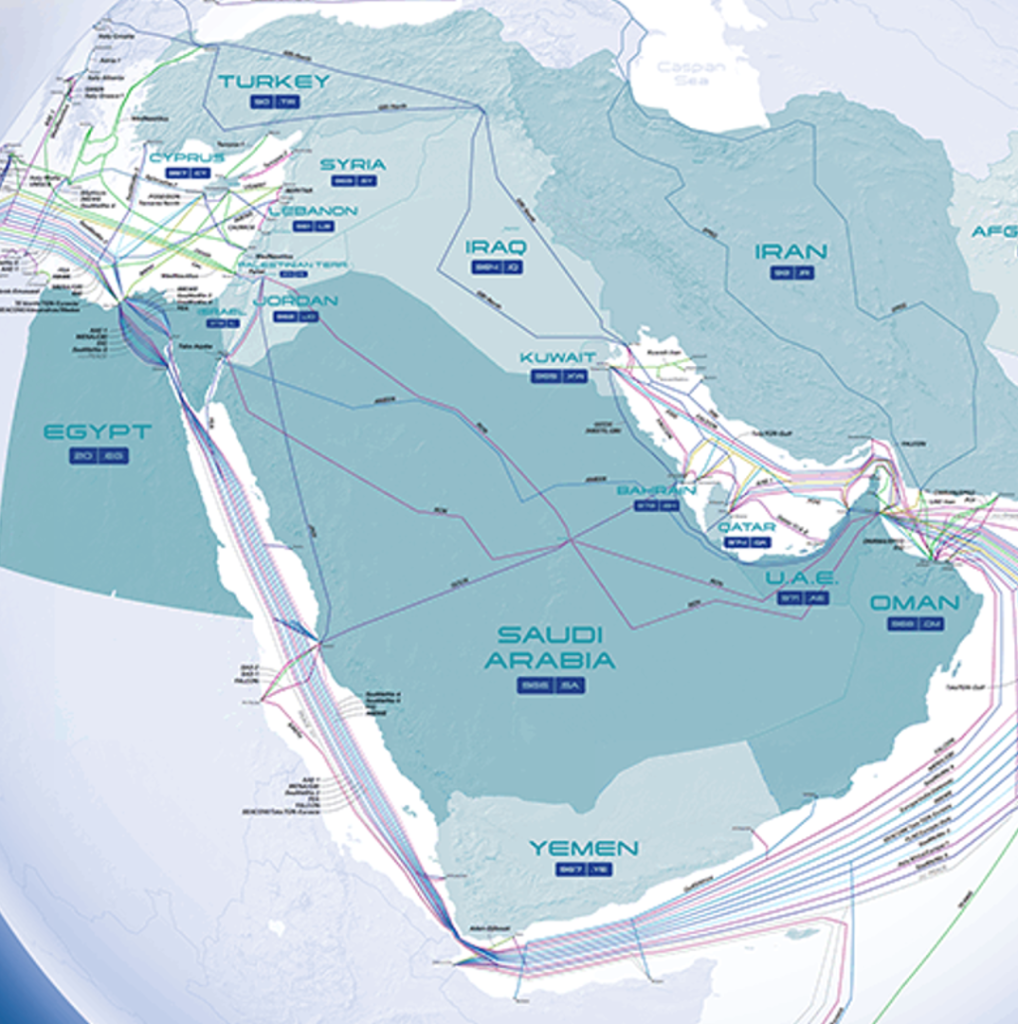ABOUT WORLDINK
The WorldLink Transit Cable Project is a transformative regional and global connectivity initiative. It is designed to provide a new digital corridor between the Gulf, Iraq, and Europe, ensuring faster, more resilient, and more secure international connectivity.
WorldLink is not just another submarine cable. It is a dual-architecture system combining a marine fiber optic segment from Abu Dhabi to Faw in southern Iraq with a dual terrestrial fiber optic network that traverses federal Iraq and the Kurdistan region to Turkey. This innovative hybrid structure ensures low-latency communication between Asia, the Middle East, and Europe, positioning Iraq as the heart of a new global internet pathway.
- Digital Hub Positioning: Iraq transforms into a central hub connecting Asia, the Gulf, and Europe.
- Economic Growth: Creates thousands of jobs in construction, operations, and ancillary industries.
- Revenue Generation: Transit fees from international carriers create a sustainable revenue stream for the state.
- Technology Transfer: Partnerships with global providers bring advanced skills and capacity-building opportunities.
- Enhanced Domestic Connectivity: Strengthens Iraq’s national broadband infrastructure and supports digital transformation programs.
- Resilient Alternative: Reduces reliance on vulnerable Red Sea routes, offering diversity for global operators.
- Regional Integration: Enhances cooperation between Gulf states, Iraq, and Turkey through shared digital infrastructure.
- Carrier Neutral Access: Opens opportunities for telecom operators, ISPs, and data centers across the Middle East.
- Boost to Regional IXPs: Facilitates local traffic exchange, improving user experience and lowering costs.
- Catalyst for Data Economy: Supports cloud services, fintech, gaming, and media industries across the region.
- Asia–Europe Bridge: WorldLink is a critical component of the global internet backbone, shortening the path between Asia and Europe.
- Geopolitical Significance: Positions Iraq as a stabilizing force in international telecom by offering a secure corridor.
- Strengthened Internet Resilience: Creates a third major Asia–Europe corridor (besides Suez/Red Sea and the northern Russia/Central Asia route).
- Investment Attraction: Opens opportunities for data centers, hyperscalers, and OTT platforms to colocate in Iraq.
WorldLink
Project Highlights
Dual Architecture System
Low-Latency Gulf–Europe Corridor
Iraq as a Digital Hub

TIME FOR A NEW ERA
Latency & Performance Advantages
WorldLink offers a shorter, more direct terrestrial path
- Reduced LatencyEstimates show 20–30% faster round-trip times between Gulf hubs and Europe compared to traditional Red Sea/Suez routes.
- Low-Latency Gulf–Europe CorridorEssential for high-frequency trading, cloud computing, gaming, video conferencing, and other latency-sensitive applications.
- Future-Ready InfrastructureBuilt with scalability in mind, ensuring consistent performance as bandwidth demands grow exponentially in the coming decades.

MARINE SEGMENTS
The marine segment begins in Abu Dhabi, crossing the Arabian Gulf, and lands at Faw, Iraq. Along the way, it branches out to connect five Gulf Cooperation Council (GCC) countries: United Arab Emirates, Qatar, Bahrain, Saudi Arabia, Kuwait.
LAND SEGMENTS
The land segment begins in Faw, Iraq. and acts as a one segment consisting of two parts: Federal Iraq Part, Kurdistan Part.

